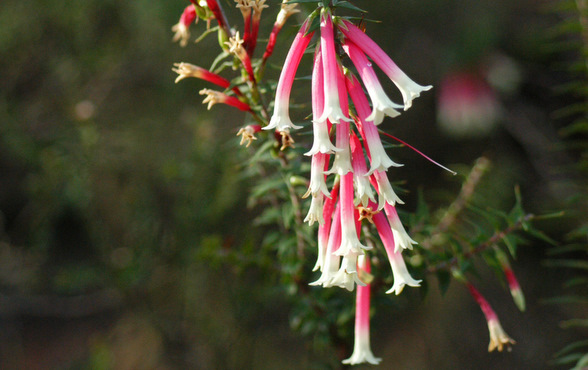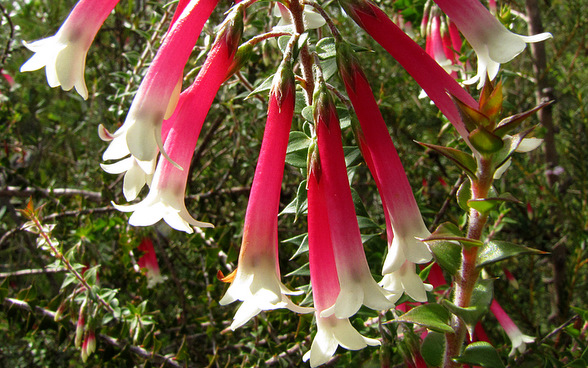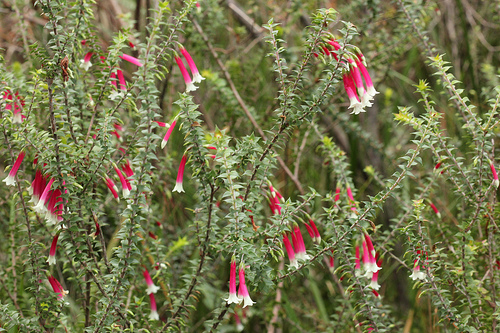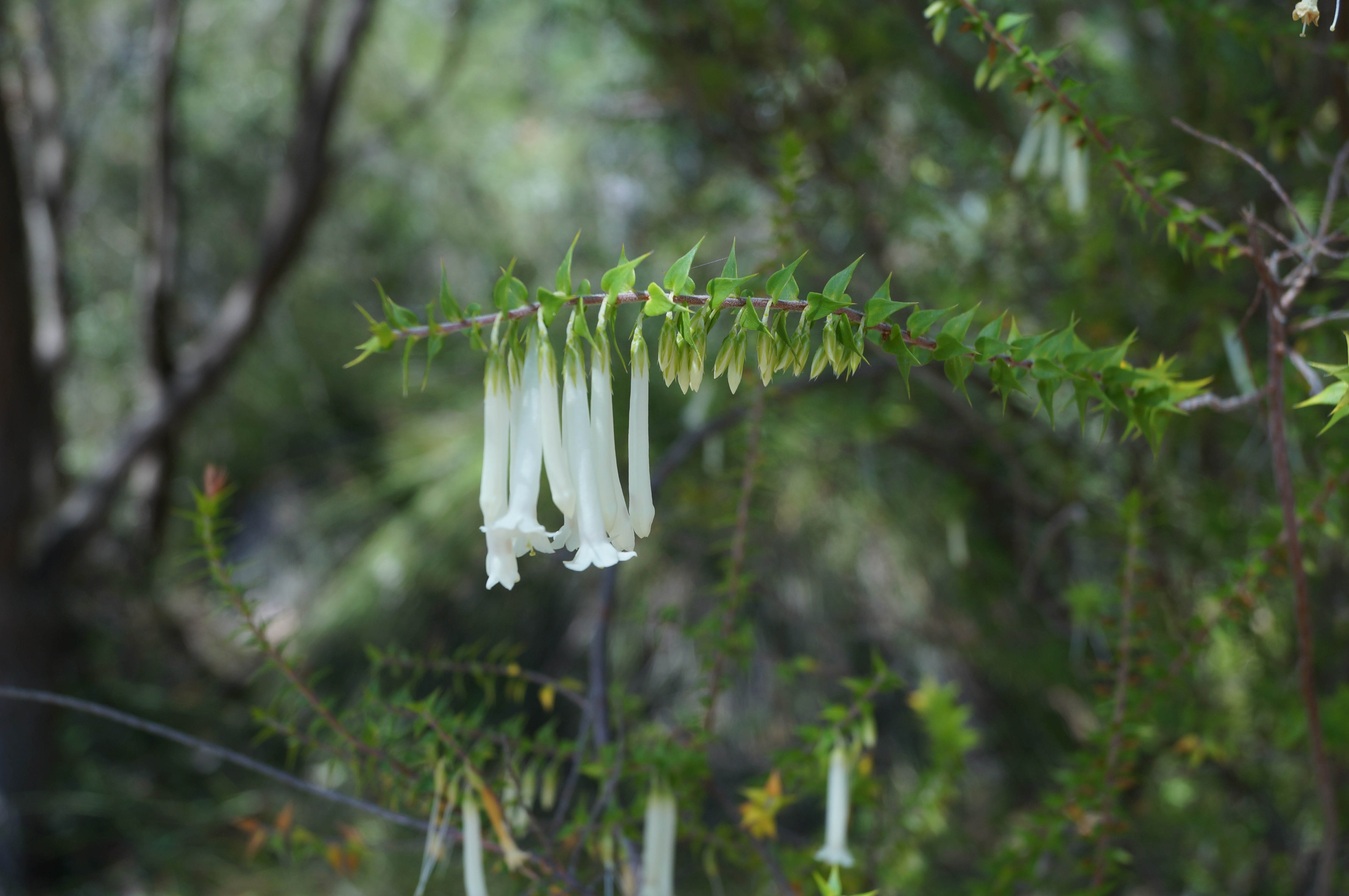Fruits/Seeds
Capsules of 3 – 4 mm long contain the small seeds.
Field Guide
Improve your identification skills. Download your Fuchsia Heath field guide here!

Its genus name Epicris means upon (epi) and a summit (acris), referring to the altitude where some species occur; and its species name longiflora means long (longus) and flower (florus), referring to the long, narrow flowers.
An upright to spreading evergreen shrub, typically straggly with branches arching towards the ground, 0.5 – 2 m high.
With pointed tip and wide base, they are often described as heart-shaped. Each leaf is 5 – 17 mm long, 3 – 6.6 mm wide, and has slightly serrated margins. It is thin, flat, and sometimes has a rough upper surface.
Long and tubular, some have pink-red tubes and white lobes (tips), others are all white. They are 5 – 6 mm in diameter and 12 – 27 mm long, with the lobes being 2.4 – 4.4 mm long. They grow in rows along the branches and are upright at first and then hang down as they reach maturity.
Capsules of 3 – 4 mm long contain the small seeds.
Improve your identification skills. Download your Fuchsia Heath field guide here!

First fully open single flower
Full flowering (record all days)
End of flowering (when 95% of the flowers have faded)
Open seed pods/capsules (record all days)


Its flowers distinguish it from any other plant.